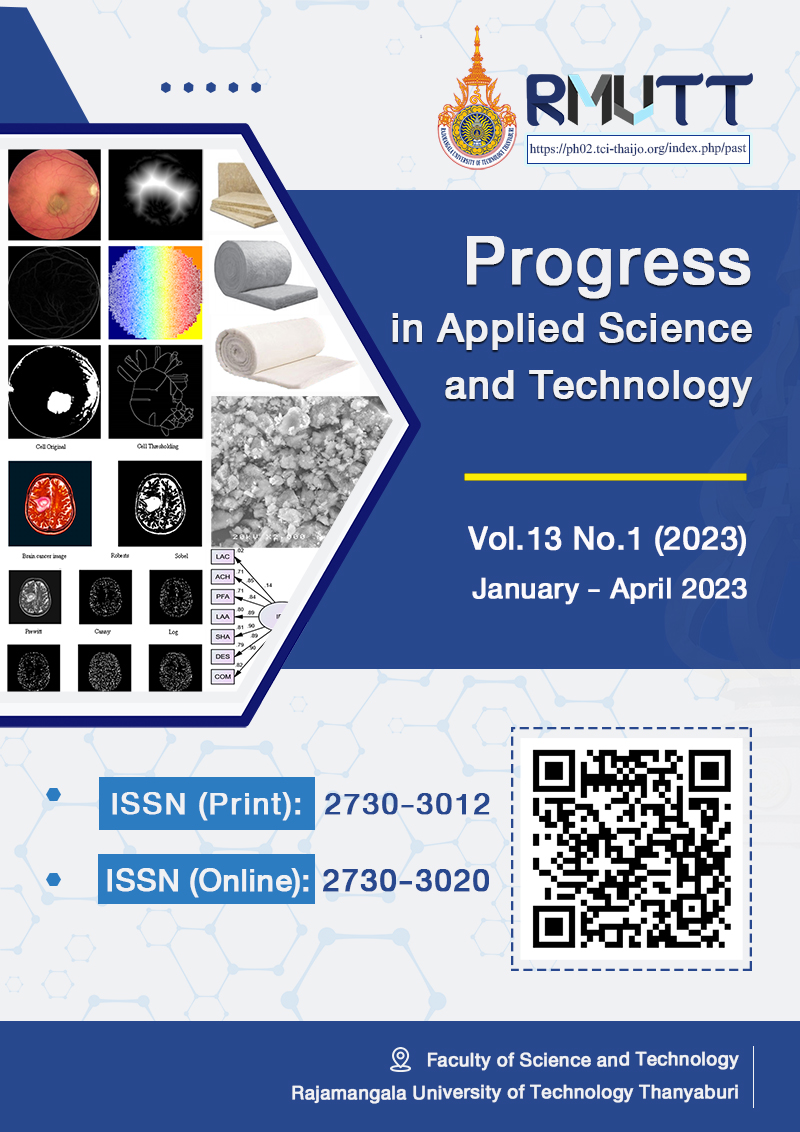Factors Affecting the Design of Process Architecture for the Development of Applied Graphic Letter Set Based on the Wisdom and Identity of Thai Alphabet Art in 4 Regions
Main Article Content
Abstract
The research aims to study factors affecting the design of process architecture for the development of a series of applied graphic letters based on the wisdom and identity of Thai alphabet art in 4 regions and to analyze structural equation models of factors affecting the design of process architecture by using both qualitative research and quantitative research methods. The researcher studied related research papers and documents thoroughly and, on the qualitative approach, conducted the intensive interview with the ten subject matter experts. In contrast, on the quantitative aspect, the researcher collected the data from the questionnaires of 357 samples.
From the intensive interview, the study found that the Northeastern experts pay attention to handicrafts and architecture. The Northern experts pay attention to the “Tham Lanna” script, and the Central Region experts pay attention to “Royal Letters” and architecture. Besides, the Southern experts focus on the local shadow play or “Nhang Taloong”. In addition, from the results of the affirmative component analysis and the structural equation modeling analysis, the study found that the factor affecting the process architecture design consists of 12 variables. The research found that the developed model is consistent with the empirical data and the results of the analysis of the aforementioned variables can be used to further design the process architecture.
Article Details

This work is licensed under a Creative Commons Attribution-NonCommercial-NoDerivatives 4.0 International License.
References
Tinnabutr P. The Standards Corporate Graphic Identity Design for Chandrakasem Rajabhat University. Chandrakasem Rajabhat University Journal. 2011;17(31).
Hong J-W, Curran NM. Artificial Intelligence Artists, and Art: Attitudes Toward Artwork Produced by Humans vs. Artificial Intelligence. ACM Transactions on Multimedia Computing, Communications, and Applications (TOMM). 2019;15(2s):1-16.
Hassan T, Hu C, Hersch RD. Next generation typeface representations: revisiting parametric fonts. Proceedings of the 10th ACM symposium on Document engineering. 2010;181-184.
Sakao N, Dobashi Y. Fonts Style Transfer using Conditional GAN. 2019 International Conference on Cyberworlds (CW). IEEE 2019;391-394.
Ardiyan A, Syamsuddin D. Aesthetic Affordances of Buto's Shape and Texture Characters in Wayang Kulit Through Digital Sculpting. 2019 International Conference on Sustainable Engineering and Creative Computing (ICSECC). 2019;380-385.
Gohshi S. Real-Time Super-Resolution Using Non-Linear Signal Processing. In: 2018 World Automation Congress (WAC). IEEE 2018;247-252.
Kanchanawasri S. Applied Statistics for Behavioral Research. 3rd ed., Bangkok: Chulalongkorn University. 2002.
Petchroj L, Chamniprasas A. Research Methodology. Bangkok: Pimdeekarnpim. 2002.
Fan W, Ma J. Features of urban architecture design based on ZYNQ embedded digital image processing. Microprocessors and Microsystems. 2020:103397.
Kim C-S, Chung S-J. Daylighting simulation as an architectural design Process in museums installed with toplights. Building and Environment. 2011;46(1):210-222.
Reichenbach M. Framework for parameter analysis of FPGA-based image processing architectures. International Conference on Embedded Computer Systems: Architectures, Modeling, and Simulation (SAMOS). IEEE 2015.
Farooq R. Developing a conceptual framework of knowledge management. Int. J. Innov. Sci. 2019;11(1):139-160.
AlManei M, Salonitis K, Tsinopoulos C. A conceptual lean implementation framework based on change management theory. Procedia cirp. 2018;72:1160-1165.
Rajapathirana RJ, Hui Y. Relationship between innovation capability, innovation type, and firm performance. Journal of Innovation & Knowledge. 2018;3(1):44-55.
Tsai C-W, Lai C-F, Chao H-C, Vasilakos AV. Big data analytics: a survey. Journal of Big data. 2015;2(1):1-32.
Wu M. Application of Color Language in Computer Graphic Design. In 2021 International Conference on Big Data Analytics for Cyber-Physical System in Smart City. 2022;2(1):1197-1201.
Zhang Y, Zhang J, Jiang J, Cai Q, Chen H. Graphic Recognition Information Processing Technology Based on Artificial Intelligence Algorithm. Innovative Computing: Proceedings of the 4th International Conference on Innovative Computing (IC 2021). 2022;521-527.
Hao M, Ni T. Digital Model of Computer-Aided Art Design: From Plane to Space. 2022.
Byrne BM, Van de Vijver FJ. Testing for measurement and structural equivalence in large-scale cross-cultural studies: Addressing the issue of nonequivalence. International Journal of Testing. 2010;10(2):107-132.
Uraipan N, Manisri T, Praneetpolgrang P. Structural Equation Modeling for Analysis of Factors Affecting the Cyber Resilience in Digital Supply Chain for Small and Medium-sized Enterprises. The Journal of KMUTNB. 2020;30(3):508–517
Kline RB. Principles and practice of structural equation modeling. 4th ed. New York: Guilford Press; 2016.
Ong MHA, Puteh F. Quantitative data analysis: Choosing between SPSS, PLS, and AMOS in social science research. International Interdisciplinary Journal of Scientific Research. 2017;3(1):14-25.
Kline RB. Software review: Software programs for structural equation modeling: Amos, EQS, and LISREL. Journal of psychoeducational assessment. 1998;16(4): 343-364.
Byrne BM. Structural equation modeling with AMOS, EQS, and LISREL: Comparative approaches to testing for the factorial validity of a measuring instrument. International journal of testing. 2001;1(1): 55-86.
Hair JF, Gabriel M, Patel V. AMOS covariance-based structural equation modeling (CB-SEM): Guidelines on its application as a marketing research tool. Brazilian Journal of Marketing. 2014;13(2).
Mueller RO, Hancock GR. Structural equation modeling. The reviewer’s guide to quantitative methods in the social sciences. 2018;445-456.






